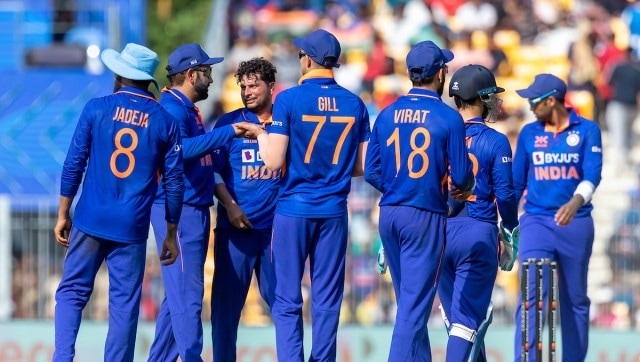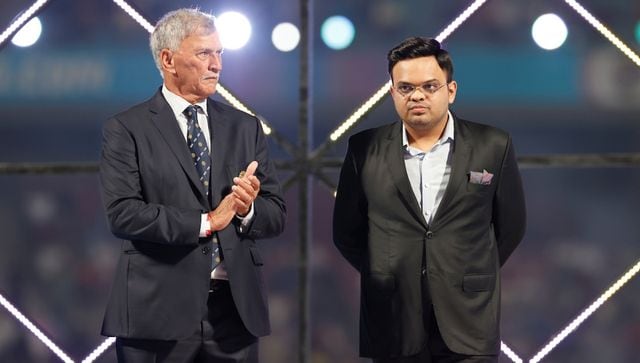Is BCCI justified in getting the lion’s share of ICC’s revenue?
Any doubts that remained over the Board of Control for Cricket in India’s (BCCI) status as the ultimate superpower in the world of cricket will have been cleared in the ICC’s Annual General Meeting (AGM) that took place in Durban, South Africa last week.
In the meeting that concluded on Thursday, 13 July, the BCCI received a whopping 72 per cent hike in its share of ICC’s net annual earnings of $600 million dollars for the cycle between 2024 and 2027. In other words, the Indian board is now set to earn approximately $230 million, or 38.5 per cent in the revamped financial model for the next cycle.
None of the other boards come anywhere close; England and Wales Cricket Board (ECB) and Cricket Australia (CA) will be earning in single-digit percentages of 6.89 ($41 million) and 6.25 ($37.53 million) per cent respectively. Pakistan Cricket Board (PCB) is fourth on the list, earning 5.75 per cent ($34.51 million) of the total pot.
Related Articles

BCCI to receive 38.5% share in ICC’s new revenue model for 2024-27 cycle

ICC financial model 2024-27: BCCI’s lion’s share and other boards’ income explained
The BCCI had been earning $46.7 million annually, or 22.8 per cent of ICC’s net annual earning, during the previous cycle between 2015 and 2023, and the hike only confirms the fact that while the senior men’s and women’s teams have not won a major tournament for a decade now, India firmly rules the sport financially.
Read | BCCI’s lion’s share and other boards’ income explained
It also confirms what has been a steady development in recent years; what used to be the ‘Big Three’ in the world of cricket with BCCI joining forces with ECB and CA around 2014 has instead become the ‘Big One’.
England and Australia had dominated the sport for decades, with the former controlling the sport from its headquarters at the ‘Home of Cricket’, i.e. the Lord’s Cricket Ground.
The BCCI’s meteoric rise in power since Jagmohan Dalmiya’s appointment as the ICC president, powered by the introduction of the Indian Premier League (IPL) in 2008, has resulted in the seat of the cricketing world shift to the Wankhede Stadium, where the BCCI is headquartered, from Lord’s.

Is the BCCI justified in getting the lion’s share of revenue?
The ICC passed the revamped financial model without much opposition. PCB was the only board that had initially raised questions on the model back in May when it had only been proposed and yet to be implemented.
“In principle, India should get more, there is no doubt about that but … how is this table being developed,” then-PCB chairman Najam Sethi was quoted as telling Reuters.
However, an absolute increase in earnings for all Full Members, with Pakistan set to earn more than twice what it had been in the previous cycle has allowed the resolution to pass through without much opposition. A change in leadership in the PCB, where Zaka Ashraf has succeeded Sethi as the chairman, has also contributed towards the smooth implementation of the new model.
One certainly might question the legitimacy of one board earning such a huge share of the ICC’s revenue and whether it gives one nation too much power over others.
The reason the BCCI fully deserves the lion’s share of the revenue is the same reason why some athletes earn more than others — it all comes down to the amount of money that an individual or an organisation is able to generate.
India always had the numbers as a result of its large television audience, thanks to its enormous population that recently surpassed that of China. A massive television audience, combined with the booming economy in the aftermath of the liberalisation in 1991 meant India was always going to be a prime market for broadcasters.
And it’s not just the ‘Gentleman’s Game’; several other sports and even the WWE have been trying to gain a foothold in the cricket-mad nation in recent years and attempted to tap into this market by opening academies, organising events and more.
Coming back to cricket, what matters is how a board such as the BCCI makes the most of this base advantage and is able to spread its influence on the global game, and this is where they’ve hit the ball out of the park. Both in the way they’ve given birth to and the manner in which they’ve raised and nurtured the cash cow that happens to be the IPL, one of the most lucrative leagues not just in cricket, but across all sports.
It is estimated that BCCI contributes about 70 to 80 per cent of the total revenue that the ICC ends up earning and strikes broadcast deals for the IPL as well as for international cricket that reach dizzying heights. Some even estimate BCCI’s contribution towards the ICC’s earnings to be around 85 per cent.
That way, recovering half of the amount that it contributes might not be such a bad thing. Among those voicing support in favour of BCCI getting the lion’s share of the pie is ECB CEO Richard Gould.
“When you see where that value is created, I think it’s understandable. There may be tweaks in the margins here or there, but the dominant position India is in is based on India’s ability to drive revenues and drive the sport forward.
“You look at the percentages and go ‘Well, that’s not fair it should be split equally’. But we’ve got to look at the size of the market,” Gould said on The Final Word podcast recently.

What will its impact be on the global game?
BCCI had been on top of the cricketing world earning a little more than half of what it is set to earn from next year. With the rich getting even richer, BCCI has only further solidified itself as the boss of the sport.
England and Australia had shaped cricket since the fag end of the 19th century when the first-ever Test took place in Melbourne. With the money and power that the BCCI has earned since the turn of the millennium, India is set to dictate terms in the coming years and will have the final say on how the sport evolves in the coming years and decades.
The biggest gainer in this regard could be the IPL, and with BCCI’s power only getting increased as a result of the new financial model, it could push for a tournament even longer than the current 74-match schedule involving 10 teams, giving it a longer exclusive window that might just gobble up the whole summer, with the winter months reserved for the home season.
The Women’s Premier League, the inaugural edition of which kicked off earlier this year, could further push the Women’s Big Bash League and The Hundred into a corner to become the most dominant T20 league in the women’s game.
Read | Women’s Champions League under discussion among top three cricket boards
The India men’s and women’s teams arguably are the most sought after in the sport today, and a tour of the Indian team often helps fill up the coffers for a number of boards that fall in the middle or lower tiers among the Full Members. Expect that impact to only intensify in the days to come. The board could also play a crucial role in spreading the game across the globe by sending teams, even second-string ones, to tour Associate Nations.
Supporters of Indian cricket will also hope that the increased finances not only translate to better salaries for players, especially the women cricketers, it would also lead to better facilities in the multitude of venues across the country and also help improve infrastructure at the grassroots level.
With great power, however, comes great responsibility, as the popular saying goes. And the responsibility remains on the BCCI to play some part not only in preserving the international game, especially the Test format, but also spread the game in more countries than ever.
For all the latest Sports News Click Here

